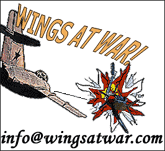Suez 1956 Aircraft
Though the Egyptians were equipped with the latest Soviet jets, which in many cases outclassed those used by their opponents, the deciding factor was as always the men flying the aircraft. Egyptian aircrew had not completed the transition from the older British jets being phased out of service and were not yet accustomed to the more powerful MiGs and Ilyushins. British, French, and to a certain degree Israeli pilots were better trained and more confident in their own ability.
Allied fighters did not take long to wrest control of the skies over Egypt, but their strategic bombers were less successful as the crews were trained and equipped for a meticulously pre-planned nuclear war in Europe, not the mission or conditions they faced in Egypt.
Aircraft carriers again proved their worth. Able to operate at short distances from their target zones their aircraft kept up a high sortie rate. Their effectiveness prompted the French to order two brand new carriers with navy jets to replace their small WW2-vintage ships and planes.
The following lists the main aircraft that participated in the Korean War. The Vapour Trails catalogue number is in blue.
THE JETS
Mikoyan-Gurevich MiG-15
With the help of German wartime technology and a couple of Rolls Royce jet engines naively gifted to the Russians by the British Labour government, the Soviets started design of a bomber destroyer in 1946. High performance and simplicity were the aim; quantity was considered more important that quality. However, the final product turned out to be an outstanding aircraft in all aspects. Fast - able to fly at very near the speed of sound - and armed with one 37mm and two 23mm cannons it was a superb dogfighter as well as a deadly bomber destroyer.
Though very manoeuverable the MiG did suffer from the tendency to drop a wing and enter a spin during very hard turning.
ISA 706
Mikoyan-Gurevich MiG-17
A redesigned MiG-15 with a sharper swept wing, and improved tail and wing surfaces to eliminate the earlier plane's handling deficiencies. With an airframe not much heavier than its predecessor but a much more powerful engine the MiG-17 had a tremendous thrust loading and proved to be one of the best ever subsonic fighter jets. The armament remained the same as the MiG-15. The Egyptian Air Force was only just beginning to receive the MiG-17 and the half dozen in service saw much combat in the air defence role.
ISA709
Ilyushin Il-28
The first Soviet jet bomber which as in their jet fighter designs made a virtue out of simplicity. Very easy to fly, it was a light bomber in a similar mold to the British Canberra though, unlike the Canberra, it had a sting in the tail being armed with twin flexible 23mm cannons firing to the rear as well as two fixed 23mm cannons firing to the front.
ISA710
Gloster Meteor
The only Suez-era jet to see operational service in WW2, the Meteor saw action with both the Egyptians and the Israelis. Twin-engined, straight-winged and armed with four 20mm cannons, it was due to be phased out of service but was much used as a sturdy ground attack plane. Both sides also operated a handful of the radar-equipped night fighters variant.
ISA80a
de Havilland Vampire
In order to keep the heavy jet engine near the centre-of-gravity the Vampire was designed with a distinctive twin-boom tail. It had already disappeared from RAF service and was about to be taken off front-line service in the Egyptian Air Force. The Mk 5 was optimised for ground attack and the thirty or so used by the Egyptians proved successful in this role. When confronted by modern enemy jets it suffered heavy losses. Armed with four 20mm cannons.
ISA610
de Havilland Venom & Sea Venom
A development of the earlier Vampire, with a larger engine and improved wing with a slight sweep on the leading edge, and armed with the same four cannons. Designed after the MiG-15 but inferior in all respects except for agility and effectiveness in ground attack. The RAF had three Cyprus based squadrons operating in the close air-support role and each British carrier had a squadron of radar-equipped Sea Venoms. The Sea Venom, a night/all-weather fighter, was meant to provide cover for fighter-bombers but they too ended up being used for ground attack. Like most jets of the period the Sea Venom had a much shorter range than the piston-engine planes it replaced. One Venom was lost to ground fire.
ISA606
Hawker Sea Hawk
Hawker's first jet fighter was a solid if unspectacular plane designed for the Navy and was the main British carrier jet for much of the 1950s. It was one of only two British jets fitted with the Rolls Royce Nene which powered US, French and Russian jets (including the MiG-15). Each British carrier had two Sea Hawk squadrons used exclusively in the ground attack role and two were lost to AA fire. Armed with four 20mm cannons.
ISA603
Hawker Hunter
Two Cyprus-based squadrons of this sleek swept-wing jet provided fighter escort for bomber and fighter-bomber raids. Fast, manoeuverable and packing a tremendous punch with four 30mm cannons it was the best of Britain's subsonic jets, though somewhat hampered by its short operating range.
ISA620
Republic F-84F Thunderstreak
The F-84F was a swept-wing development of the F-84 Thunderjet and though inferior to the F-86 Sabre it formed the basis of most NATO fighter-bomber forces of the latter 1950s. Armed with the usual USAF fit of six 0.5" machineguns, preferred for a faster rate-of-fire and greater load of ammunition than cannon. Machineguns have around double the firing time before ammo is expended, but it usually took a dozen or more hits to bring down a plane as opposed to a single hit from a large calibre explosive cannon shell. The F-84F could also carry a considerable load of bombs. Four French squadrons were equipped with the Thunderstreak, two based on Cyprus and two at Lydda in Israel.
Dassault Ouragan
The Ouragan was the first French designed jet fighter and though rugged was obsolete by 1956. Israel was desperate for aircraft so a single squadron was gratefully accepted from the French. They were originally to be used as trainers until better jets came along but ended up having a long operational career in the ground attack role. The Ouragan's most spectacular success was when a pair crippled the Egyptian destroyer Ibrahim El-Awal. Armed with four 20mm cannons.
ISA680
Dassault Mystere IVa
With a sharply swept wing and two 30mm cannons the Mystere IVa was the most successful immediate post-WW2 product of the steady evolution of French jet fighters. The three French squadrons were based in Israel, painted in Israeli colours and given a fake Israeli squadron number. These, along with the single real Israeli squadron provided airfield defence and top cover for fighter-bombers. One Israeli Mystere was lost.
ISA681
English Electric Canberra
One of the most successful post-war British designs, it was even acquired by the USAF. Possessed of outstanding agility for a bomber the Canberra was originally conceived as a replacement for the Mosquito light bomber and bomber pathfinder. However, with the advent of the Soviet jet fighter it became obvious that the RAF could not rely on piston-engine heavy bombers for the strategic role and so Britain's first jet bomber was pressed into that role until the larger 'V' bombers came into service. Though the first of these, the Valiant, had just joined the RAF at the time of the Suez Crisis the Canberras and their crew were still equipped for the strategic mission. The single Canberra lost was a photo-reconnaissance model shot down over Syria by two Syrian Meteors.
ISA608
Vickers Valiant
The first of Britain's trinity of jet-powered 'V' bomber force to enter service, the Valiant's participation in the
campaign could be considered as the proverbial sledge-hammer to a nut, especially as the Allies were trying to avoid civilian casualties, (especially American civilians and diplomats). Four squadrons were used during Operation Musketeer.
ISA622
PROPELLER PLANES
North American F-51
Undoubtedly one of the best fighters of WW2 and near the apogee of performance levels for piston-engine planes, the Mustang soldiered on throughout the 1950s. Two squadrons were used by the Israelis for ground attack, though their inline engines proved to be vulnerable to Egyptian AA fire. Nine were lost and many heavily damaged. Armed with six 0.5" MGs.
ISA283b & c
Westland Wyvern
In order to extract as much speed as possible from its engine the Wyvern's massive turboprop drove a pair of contra-rotating propellers. Development delays meant that by the time it entered service jets had already taken over the strike-fighters role, the mission intended for the Wyvern, and it was soon superseded by the Sea Hawk. A single squadron was based on HMS Eagle flying close-support missions. Armed with four 20mm cannons and up to 3,000lbs of bombs or rockets. One Wyvern was lost to a MiG-17 flown by a Russian 'advisor'.
ISA605
Vought F-4U Corsair
French carriers were too small for jets so most of the work was done by two Corsair squadrons. Unlike US Navy F-4Us French Corsairs were armed with 0.5" machineguns.
ISA261a & b
de Havilland Mosquito
The speed of the WW2 era twin piston-engine Mosquito meant it was still a useful light bomber and reconnaissance plane. Though most had been relegated to reserve duty at least a dozen Israeli Air Force Mosquitos saw action as ground attackers, normally in concert with F-51 Mustangs. By contrast with the F-51s none were lost to ground fire.
ISA75a
Boeing B-17 Flyingfortress
During the early days of Israeli independence they purchased three civilianised B-17s from America. These were quickly converted back to bombers in Czechoslovakia and were used to good effect against Egyptian forces in 1948. Scope for their employment was fairly limited during 1956 but they managed several high level attacks, mainly at night, during the Sinai campaign.
ISA280
Miscellaneous Types
The Egyptians pressed into service some 70 or so piston-engine advanced trainers such as Spitfire and Sea Fury fighters. The Israelis used their Harvard trainers (the British designation of the T-6 Texan) in a similar role. The British had sold 9 surplus Lancaster bombers to Egypt in 1949 but it's doubtful that they were serviceable by 1956.
ISA41d, ISA602 & ISA810
Click on the links below for more information
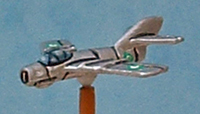
MiG-15
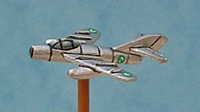
MiG-17
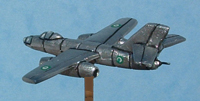
Il-28
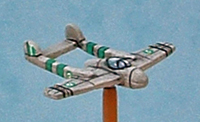
Vampire
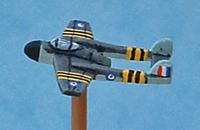
Sea Venom

Hunter
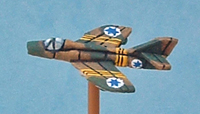
Mystere IV
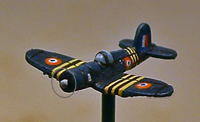
F-4U
